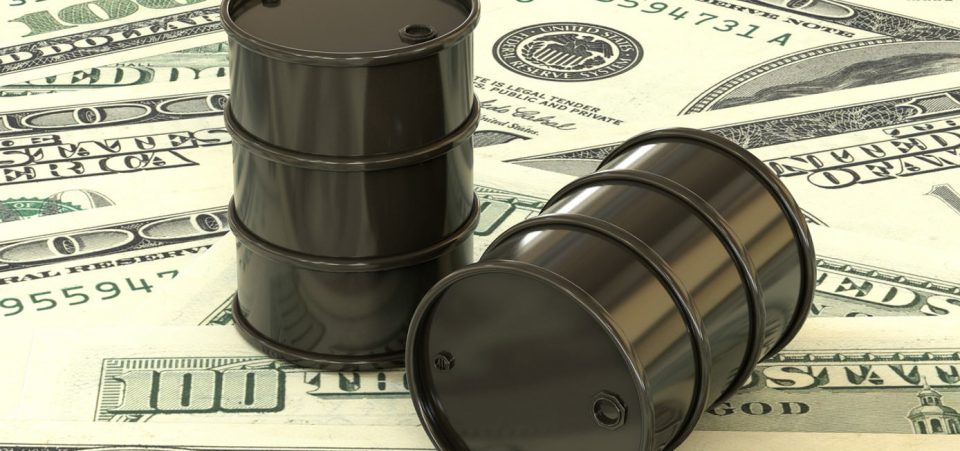Is the Petrodollar Threatened?
The petrodollar is threatened. New powers are emerging and it’s inevitable that America’s economic and financial hegemony come under threat. Yet, no matter how prepared an individual or a nation might be, change always arrives abruptly. It catches everyone by surprise, causing stress even when the change is for the better—let alone when it adds risk. The petrodollar has been one of the main instruments of American power in the past 50 years.
The U.S. dollar is the sovereign currency of all oil transactions. Any country that wants to buy crude oil, whether West Texas Intermediate, Brent, or OPEC, pays for it in American dollars. Iran has tried to challenge this dominance, issuing the Kish Stock Exchange in late 2010. The effects have been limited, thus the concept of “Iran and the petrodollar threat to the U.S. empire” has not materialized. But there are bigger and more credible threats around the corner.
As with all things economic these days, the hazard to American supremacy comes from China. China has already made bilateral agreements, exchanging crude and refined oil products with Japan and Russia in yuan.
What Is a Petrodollar?
“Petrodollar” is a term first used by Ibrahim Oweiss, an economics professor at Georgetown University. He was looking for a word that would capture the socio-economic disruption to the countries that found themselves the sudden recipients of billions of U.S. dollars from the sale of oil. These include Saudi Arabia, Kuwait, the United Arab Emirates, and Iran. These countries and a few others formed the Organization of the Petroleum Exporting Countries, better known as OPEC.
The combination of higher oil prices and higher oil demand generated a demand for dollars. The concept of the U.S. dollar as a reserve currency, resulting from the Bretton Woods Agreement in 1944, came to full fruition with the higher oil prices. The dollar became the unchallenged reserve currency of choice. This is what has allowed the dollar’s value to remain generally stable even in times of financial shock (as in 2008).
OPEC countries have filled their coffers with oil revenues. Because many of these states had small populations and almost non-existent economies outside of the oil sector, they reinvested their substantial financial resources—in dollars—into the global economy. The effect was destabilizing for many countries, but it was great for the United States. The world needed dollars to run its economy because the petrodollar concept spread to other commodities. Mining resources are also priced in dollars.
Petrodollar Collapse 2018
All countries, whether they’re friendly with the United States or not, must buy oil and other commodities in dollars. This ensures stable international demand for the U.S. currency, which in turn supports its exchange rate in relation to other currencies. Indeed, the petrodollar allows the U.S. to sustain a huge foreign debt, supporting its residents’ lifestyles and its military might. That’s why the effects of the petrodollar collapse would be tragic for the United States.
Simply put, petrodollars make sure that Americans pay much less interest on their foreign debt. As a reminder of why that’s so important, consider that the British were able to colonize Egypt in the late 1800s because the Egyptian government could barely afford to pay the interest on loans it took (or was forced to take) to build the Suez Canal. Having access to cheap credit and being able to run a massive deficit is one of the greatest economic assets America enjoys. Petrodollars make this possible.
Even if the U.S. should manage to become completely energy independent through a mix of its own oil resources, gas, nuclear, and “green” energy supplies, the emerging economies of Asia—and eventually Africa—still need oil. Therefore, the U.S. could continue to reap rewards from the petrodollar. But China and other powers want to crash this party.
So long as oil is sold in dollars, all oil-importing countries (the vast majority) will have to pay for it in dollars. This perpetuates demand for the U.S. currency. The equation is simple and well-understood: no dollars equals no energy equals no economy. The high relative value of the dollar, meanwhile, allows even a lower-class American to live better than a high/middle-class citizen of a majority of countries—except Western Europe, Japan, South Korea, and a handful of South American countries.
Americans can themselves enjoy relatively cheap credit to buy every possible material comfort. They can do that because even while U.S. debt is among the highest in the world, all of the world’s central banks demand dollars. They then use these to acquire dollar-denominated assets. It’s a virtuous circle that constantly refreshes the U.S. economy. Perhaps it’s at the level of the individual American that the petrodollar produces its biggest and most tangible benefit: low taxes.
Without petrodollars, there’s no way that President Trump would have gotten Congress to approve his aggressive corporate tax cuts. The petrodollar ensures that no matter who’s in the White House, any major economic mistake can be absorbed thanks to the dollar’s hegemony, a hegemony that the petrodollar makes possible.
The Rise of the Petro-Yuan
Enter the Petro-Yuan. The size of China’s economy has been catching up quickly with the United States. Understandably, China wants its geopolitical influence to spread in accordance with its economic power and establishing its own indispensable currency has become a priority. The petrodollar has shown how useful a tool having access to a currency everyone needs can be. The catalyst that could accelerate the Petro-Yuan’s rise emergence, however, will likely come from Iran or, more specifically, U.S. Iran sanctions.
China is one of Iran’s main customers for crude oil. It’s also one of the biggest proponents of the Iran nuclear deal. The tougher Washington acts toward Tehran, the more it will drive Tehran closer to Beijing—and Moscow, of course. On January 12, President Trump confirmed that the U.S. would not resume enforcing sanctions against Iran. (Source: “Trump Keeps U.S. in Iran Nuclear Deal But Adds New Sanctions,” Bloomberg, January 12, 2018.).
The White House has added some new restrictions against a dozen or so individuals working on Iran’s missile technology, but nothing new has been added to the Iran nuclear sanctions timeline. The nuclear deal continues for another six months at least. But that’s not going to stop the Petro-Yuan. The Iranians know that Trump’s de-facto approval of the Iran nuclear deal—despite his campaign promise to stop U.S. endorsement for it—merely buys them time.
The geopolitics of the Middle East now are as complex as ever. Conditions are such that a single miscalculation could lead to a disastrous war. Iran cannot challenge the United States militarily. Whatever the Iranian leaders are, they’ve proven to act strategically. After all, chess was a game perfected in ancient Persia. They can hurt U.S. interests better by encouraging crucial buyers—like China—for its oil in yuan, reducing the impact of U.S. sanctions, should Trump or any other president change their minds on the Iran deal.
When Will the Petrodollar Collapse?
It may well be Iran that decides the outcome of the question: When will the petrodollar collapse? Thus, Iran will also be the one to watch for Petro-Yuan news. Unencumbered by sanctions, Iran can sell its oil to anyone. But, the U.S. has priced itself out of Iranian oil. It doesn’t buy it. Thus, it can’t impose any conditions of purchase as was the case in the 1970s.
Given the choice, Europe would also prefer to pay for oil in euros. But it lacks China’s influence now. Moreover, if China started to pay a major energy-producing country like Iran in yuan—or Petro-Yuan—it could demand similar arrangements with other producers from Venezuela, North Africa, or Saudi Arabia. This would result in putting enormous pressure on the dollar, which would collapse against other major currencies. The petrodollar would lose its value, giving way to the Petro-Yuan.
There’s little that the United States can do about this. Iran can produce oil cheaply. Thus, even if oil prices were to drop to below breakeven levels for such major producers (and regional rivals) as Saudi Arabia, Tehran would still be able to secure a profit. If the Saudis overproduce to bring prices down, they would hurt themselves and their allies more than they do Iran.
While Trump threatens to impose sanctions against Iran at the next review, should he do so, Iran could resume its nuclear arms program. It would force the U.S. to risk another—and extremely costly—military intervention. China, Russia, and the EU have made it clear; they support the Iran deal. The U.S. might only get backing from Israel and Saudi Arabia for any military action against Iran.
Clearly, sanctions are no longer the strongest instrument that the United States can use to thwart Iran’s emergence as a regional power—much less its nuclear aspirations. The history of Iran sanctions has shown they have not been effective. U.S. sanctions against Iran were first imposed after the 1979 Revolution—the holding of hostages at the U.S. embassy served as the trigger—that brought Ayatollah Khomeini to power.
Sanctions intensified during the 1980s. The escalation over the past decade resulted from concerns that Tehran launched a program to develop nuclear weapons. The restrictive measures against the Islamic Republic of Iran have included the freezing of its capital abroad (some $10.0 billion) and bans on importing goods and services (anything with a potential military application). The most effective tool in the U.S. sanctions box against Iran was one against foreign companies investing in the Iranian energy sector.
This has slowed Iranians from developing their oil assets, new exploration, and refining capacity. The idea was to force Iran to come to terms; to surrender diplomatically. It turns out, Iran may be the one to impose its own terms thanks to the threat of the Petro-Yuan. It may be better for Trump to consider improving relations with Iran. Such a policy has a better chance to perpetuate the influence of the petrodollar. Hostility, on the other hand, will accelerate its demise.
The petrodollar is dead, long live the Petro-Yuan.







